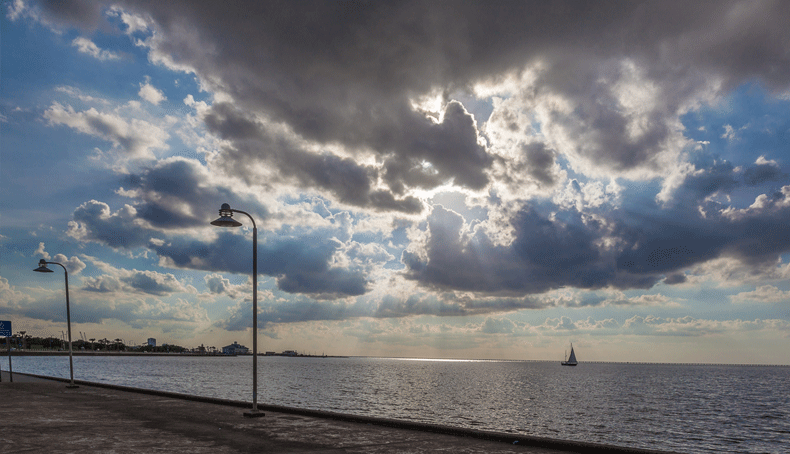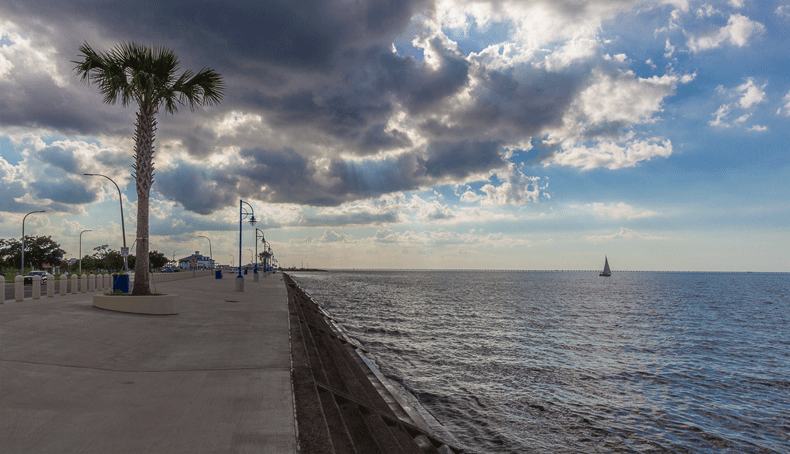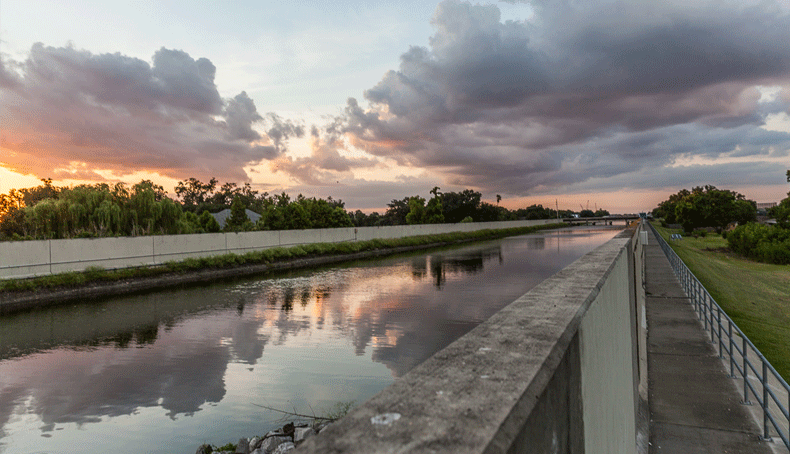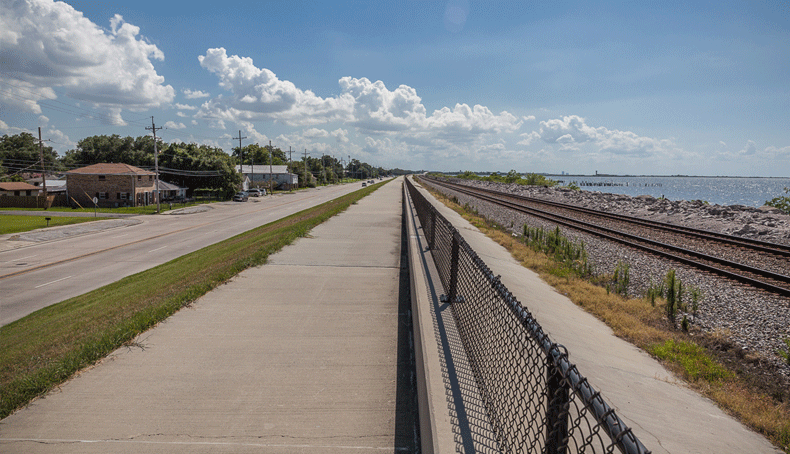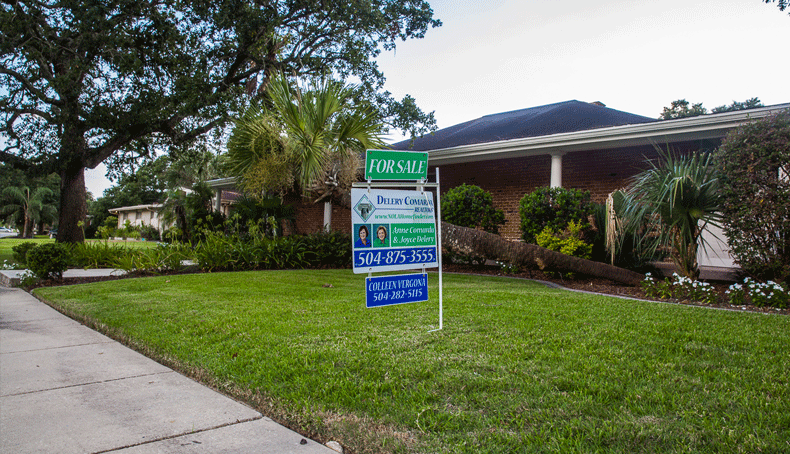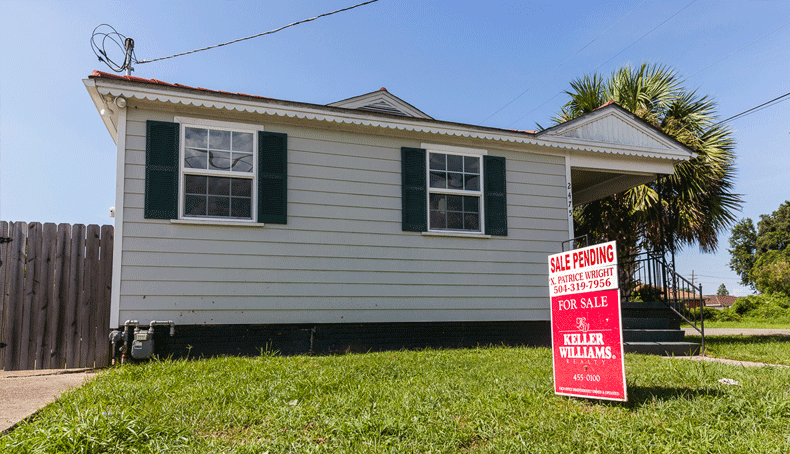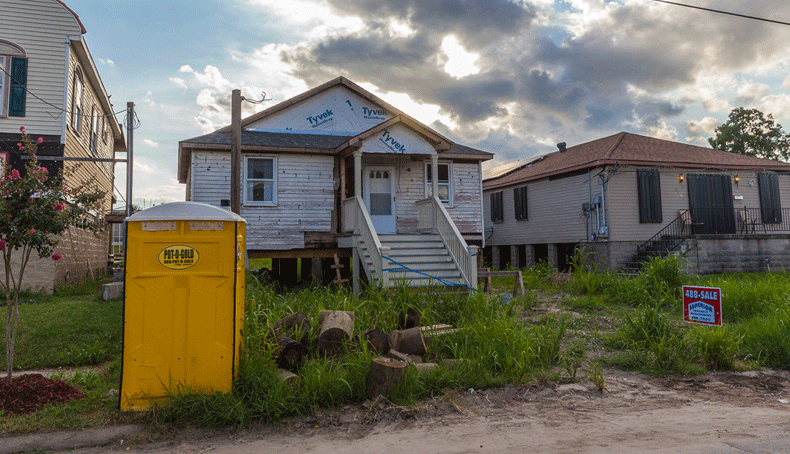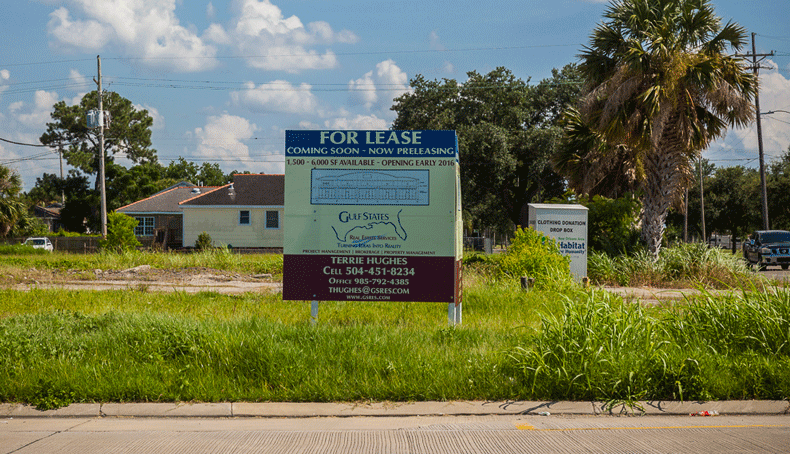It's an event still crystal clear in the memories of millions of people. In August 2005, Hurricane Katrina devastated New Orleans, profoundly altering the character of the city and reshaping it in ways that are still being felt. Ten years later, Economy Matters looks at the rebound of a great American city and finds that although much progress has occurred, New Orleans residents are in many ways still mopping up.

In the 10 years since New Orleans was battered and choked by Hurricane Katrina's storm winds and floodwaters, the city has regained much of its charm, regaling visitors with Mardi Gras and jazz festivals and unifying citizens around its local NFL team, the Saints.
But to say New Orleans has returned to business as usual is taking a tourist's view, focusing on the cosmetic and ignoring the underlying structural changes of the last decade. While New Orleans's recovery has been an impressive show of resilience, many who now call the city home have arrived in the last decade. An unknown number of people fled the storm and never returned. In all, the New Orleans of today has a different demographic composition and significant improvements in infrastructure, education, housing, crime, and economic diversity. But despite all the changes, those living in New Orleans share one trait: they are ready for the good times to roll.
Before the storm...
Two of the simplest measures of pre- and post-Katrina New Orleans are population and gross domestic product (GDP).
"The city—just in straight numerical terms—is smaller than it was pre-Katrina, but it's continuing to grow," said Allison Plyer, executive director and chief demographer of the Data Center, an organization that researches data about the greater New Orleans area (see chart 1).
"Every year that the population estimates come out, the number increases. So obviously we lost a lot of population right at the time of Katrina, but we've continued to gain population since then."

Allison Plyer
The citizens repopulating represent a different mix of demographic areas.
"We lost a sizable number of African-American residents," Plyer said. "The city now has nearly 100,000 fewer African Americans, but also it has about 12,000 fewer whites." She noted that the city's Hispanic population is up about 45,000 since Katrina, and around 6,000 more people of Asian descent now call New Orleans home.
As for gross domestic product (GDP), the New Orleans metro area did not experience the same sudden post-Katrina drop as it did with population. Instead, GDP held stable before taking a jump. Between 2005 and 2009, New Orleans's GDP hovered between $69 billion and $72 billion, and then between 2009 and 2013, it hovered between $78 billion and $82 billion (see chart 2).
The stories behind these numbers, however, illuminate the structural changes behind the recovery of New Orleans.
Follow the money
The first step started with government investment.
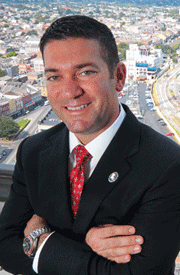
Michael Hecht
"Disasters—whether we're talking about 9/11 in New York or Katrina in Louisiana—are cash-flow-positive events," said Michael Hecht, president and CEO of Greater New Orleans Inc. "Of course, we're not talking about the human loss, and we're not saying that disaster is a good thing that we would ever wish on anybody. But we know historically that when there's a disaster, the country responds very generously." Hecht said that Louisiana, and the New Orleans region, received close to $140 billion of investment (some of which is still flowing in) from federal and other sources. "So there's been a massive investment in new infrastructure, in roads, in schools, and the hospital, that are supporting the economy post-Katrina."
This infusion of cash was particularly instrumental in turning one of the weaknesses exposed by Katrina into a strength.
"We got $15 billion from the federal government to fortify our levees," Plyer said. "We now have the strongest levees in the country. And then we also have spent about $6 billion on coastal restoration, because the coast is our first line of defense against storm surge." An additional $8 billion is earmarked for projects including coastal restoration and urban water management.
Masters of disaster, and jacks of many trades
The twin engines that powered the New Orleans economy for the decades preceding Katrina were the tourism and energy sectors. Ten years on, opportunities are spread across multiple new areas—much of it sparked by federal investment.
Plyer pointed to growth in digital media, where new tax credits for the movie industry prompted a significant surge in the region's digital media and movie production.
Hecht, meanwhile, highlighted two other burgeoning industries. "We had very little in the way of a software industry before Katrina," he said. "Now we are the fastest-growing software market in America." He also cited a $2 billion medical facility, which he expects to become a major economic driver.
But perhaps the crown jewel in the new suite of growth industries is something Hecht called "emerging environmental," which is about management of environmental challenges.
"We've had this brand of having issues with water, whether it's hydrology in the river, or coastal erosion, or interior water management from rainwater," Hecht said. "But now our brand has pivoted from being seen as the victims of disaster to people now seeing us as the masters of disaster. For example, there are New Orleans companies with over $300 million worth of contracts in New York helping them rebuild after Hurricane Sandy." Hecht said the city had recently been visited by representatives of the Iraqi government who are interested in learning from New Orleans's experience to help them reconstruct the Mesopotamian marshes.
Plyer said this form of expertise builds on one of the area labor force's existing strengths. "A lot of the occupations are the same: engineers, scientific consultants, pipefitters, welders, construction jobs of all sorts—so it is an excellent diversifying agent in our economy. Of course we'll always be exploring for oil and gas, but having a new and growing industry with markets all over the country, like in New Jersey after Hurricane Sandy, and all over Florida and many parts of the U.S., is an excellent diversifying agent for our region."
Not only has the array of industries in New Orleans expanded, but also the total number of business entities has increased, surpassing the pre-Katrina total (see chart 3). In 2004, New Orleans had 36,917 business establishments, a number that remained relatively constant until jumping to more than 40,000 in 2013, according to the U.S. Bureau of Labor Statistics (BLS).
The diversifying economy has also been good to the pockets of many in New Orleans. Since Katrina, census figures show the median household income has gone up 19 percent (from $30,711 in 2005 to $36,631 in 2013), and per capita income has gone up 22 percent (from $21,998 in 2005 to $26,957 in 2013; see charts 4 and 5).
And throughout the entire decade, New Orleans's unemployment rate has been below the national average, especially between 2006 and 2008, when it was below 5 percent (see charts 6 and 7).
Dual threats: Crime and poor schools
"(Two) questions I get consistently from prospects are, where are my kids going to go to school and am I going to be safe?" Hecht said.
On both fronts, profound structural changes have altered the landscape (see chart 8).
Regarding education, the city's poorly rated and notoriously struggling public school system was addressed by two acts of the Louisiana legislature. The first was Act 9, which was passed before Katrina (2003) and created the Recovery School District (RSD) to take over operation of failing schools. To be classified as failing, schools would have to perform below the state's minimum academic standards for at least four consecutive years. In 2004, Pierre Capdau School in New Orleans became the state's first RSD charter school. Not long after that, four other schools were converted to RSD charter schools, bringing the total to five before Katrina.
The legislature's second move, Act 35, came in the aftermath of the storm, which damaged or destroyed more than 100 of New Orleans's 128 school buildings. This act made it easier for the RSD to claim schools by stipulating that the state could take over schools that were performing below the state average. Suddenly, the RSD added 107 of the state's poorest-performing schools, with most of these located in New Orleans.
Hecht is quick to praise the progress the schools have made, noting that the percentage of failing schools fell from 52 percent before Katrina to just 6 percent now, according to figures from the Louisiana Department of Education. "I can say my own kids were taken out of expensive private schools and put into public school," he said.
Fewer inmates, a lower prison tab
Meanwhile, a new approach has altered the crime picture even as the city's murder rate remains troubling. Before Katrina, New Orleans incarcerated a higher percentage of its residents than any other city in the nation and did so at a rate five times the national average, according to the BLS. And the rate of incarceration was growing. The number of prisoners at the Orleans Parish Prison (OPP) rose from more than 2,300 in 1981 to approximately 6,300 upon Katrina's landfall. One key factor that led to this steadily increasing population was that the OPP didn't hold only defendants who posed a significant risk to public safety or of flight—it also held thousands of pretrial defendants who were unable to post bail.
Photos by Kendrick Disch
After Katrina moved through the area, the displacement of a sizable portion of the city's population eased some of the stress on the OPP. However, by 2008, New Orleans's incarceration rate began rising again, jumping from approximately eight prisoners per 100,000 residents to approximately 11, according to data from the FBI, the U.S. Bureau of Justice Statistics, and the U.S. Census Bureau. By 2010, the City Planning Commission recommended approval of a proposal for a new 5,832-bed jail complex to replace the city's flood-damaged facilities. The most enticing part of the proposal was that funds from the Federal Emergency Management Agency would pay for the prison—no city money would be needed.
However, once the planning commission's decision became public, opposition arose from a number of citizen groups, including the Orleans Parish Prison Reform Coalition, the Workers Center for Racial Justice, and the New Orleans Coalition on Open Governance. With progress on the new jail temporarily stalled, then-Mayor Mitch Landrieu convened a working group to review the proposal. This group proposed a number of policy reforms, which, if implemented, would enable the city to function with a jail housing only 1,485 inmates by the year 2020. Reaching that goal would be quite ambitious, as the OPP had approximately 3,400 inmates at that time.
Two significant changes enabled New Orleans to make headway toward its objective. First, New Orleans police went from arresting 70 percent of people charged with nonviolent municipal offenses to issuing summons to most of those individuals. The other significant change was releasing nearly 10 percent of defendants who posed low-to-moderate risk and did not have the financial means to post bail. Before Katrina, none of the defendants would have been released. The results have been positive: the vast majority have remained crime-free during the pretrial period and have shown up for court dates.
The impact of these initiatives is a 67 percent overall decrease in prisoners, from 6,000 before the storm to fewer than 1,900 in April 2015. This decrease has provided great cost savings without affecting the city's pursuit of reducing crime. According to the Office of the Inspector General, the cost of housing an inmate per day in 2011 was $47.26. As for the reduction in crime, New Orleans's violent crime rate improved by 38 percent, from 773.2 instances per 100,000 residents in 2007 to an average of 478 instances per 100,000 residents each of the last four years for which the FBI has records (2010–13). The property crime rate also improved by 27 percent, dropping from 4,522 instances per 100,000 residents in 2007 to an average of 3,265 the last three years for which the FBI has statistics (2011–13).
Hecht has no problem touting the city's improved safety. "For most people having a middle-class existence, it'll be as safe or safer than living in New York or San Francisco. That's been my own experience," he said.
Though the new approach to incarceration is having a positive effect, New Orleans still faces a challenge with its murder numbers.
"Our homicide rate is still unacceptably high," Hecht observed. "But it is at a 40-year low."
According to the FBI's most recent statistics in 2013, the New Orleans metropolitan area had 235 murders for an average of 19 per 100,000 residents. Only Saginaw, Michigan, had a higher average, at 19.2.
Challenges remain as the area climbs back
Of the challenges remaining from Katrina, one of the biggest is housing affordability (see chart 9).
Generally, housing costs that exceed 50 percent of a household income indicate a serious problem. In New Orleans, the lack of affordability has hit renters harder than homeowners. In 2004, the year before Katrina, approximately 24 percent of New Orleans's renters fell into this category, matching the national average. In the decade since, the national average has risen to 26 percent. However, in Orleans Parish, the number has jumped to 37 percent. Meanwhile, the rate of New Orleans homeowners devoting more than half of their income to housing costs is almost unchanged from 2004. The primary cause there is a 33 percent hike in gross rent (rent plus utilities) from $698 per month to $925 in New Orleans between 2004 and 2013, according to the Data Center. The hike was 20 percent for the metro area. Both figures are far above the national average, which rose only 6 percent.
Photos by Kendrick Disch
"There is a conversation going on right now between the governor and the community about how to address these issues," Hecht said. "The real issue with housing asset price appreciation is those who don't own homes. Those who own their homes actually benefit from this increase.
"And they're able to create intergenerational wealth, which is a good thing. It's those on the renter market who are unable to afford buying a home that get squeezed out."
Hecht added that the region-wide conversation includes the uneven distribution of the housing recovery's benefits.
"Until we begin to see the benefits enjoyed and shared across race and class lines, we're not going to reach the level of stability and middle-class growth that we need for long-term sustainability," he said.
Plyer said continuing the improvement of the city's educational system is a key.
"Educational attainment is a challenge in our region, with a smaller share of our adults having a bachelor's degree or even some college as compared to the nation. Our growth is lagging that of the nation." She said the challenge of improving educational attainment is especially acute among black men.
Putting disasters into context
Hecht has the unique perspective of seeing the aftermath of two of the nation's most horrific and galvanizing events: Hurricane Katrina and the World Trade Center attacks on September 11, 2001.
Although the maternal side of Hecht's family has roots in south Louisiana, Hecht grew up in New York City. He was running the post-9/11 small business program for Mayor Bloomberg's administration when a delegation from Louisiana visited New York City for guidance about managing federal money in support of local small business. Two months later, Hecht left a job fostering the recovery from 9/11 and found himself on the steps of the Louisiana state Capitol announcing a $4 billion small business program with Governor Kathleen Blanco.
The passage of time has brought some perspective to Hecht on both epochal events. He sees commonality between them, even though one was a man-made tragedy in a small geographic area, and the other was a natural disaster that overwhelmed an entire region.
"At the highest level, the way that you honor the loss from disaster is by rebuilding something better," Hecht said. "This is something I call not just resilience, but radical resilience—the idea that you can transcend what you were before, and that's a way of honoring those who suffered. That's happened arguably both in downtown New York, which is much more vibrant than it was before, and in greater New Orleans, where we have what the publisher of Forbes called the greatest economic comeback of our lifetime." Ten years after Katrina, residents of the Crescent City remain ever-mindful of the human toll the storm exacted, and it gives their rebound special meaning.
Read the Economy Matters story on Katrina's impact on the Mississippi Gulf Coast.
Read the Economy Matters story on Katrina's impact on the Louisiana wetlands.
See Adrienne Slack's video interview in its entirety.




